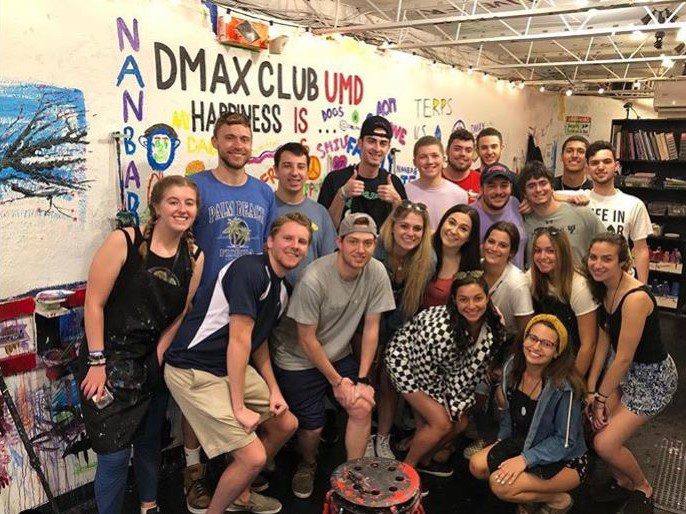Young professionals who graduated in the last six years have come of age in an anxious and uncertain time. From the proliferation of social media, to political and cultural divisiveness, to the epic changes brought on by the global pandemic, these young people saw the norms of human behavior rewritten in real time. Employees in their mid-twenties were in grade school when the smart phone was introduced. Many of them learned that the same technology that brought instant connectivity and learning opportunities, could just as easily distract, addict, or alienate.
About half of these young professionals had their college trajectories significantly disrupted by COVID-19 as experiences and milestones (including graduation) transitioned to virtual modalities. Many of them also started their first jobs from home and may still have not met their co-workers in person. The pandemic accelerated this mental distress they were reporting in college and provided a stark reminder of the country’s vast inequity, which left many students more financially and emotionally stressed as students of color and low-income students bore the brunt of COVID-19’s impact.
The Mary Christie Institute, in partnership with the Healthy Minds Network, the American Association of Colleges and Universities (AAC&U), and the National Association for Colleges and Employers (NACE) conducted a survey of graduates between the ages of 22-28 seeking to better understand the mental and emotional health of early career professionals.
The findings present a concerning picture of overall mental health and wellbeing among this population.
According to the survey, a majority (51%) of young professionals reported having needed help for emotional or mental health problems in the past year. Nearly half (45%) said their work environment has taken a negative toll on their own mental health. More than half (53%) are experiencing burnout at least once a week, defined as physical and emotional exhaustion related to one’s work. Women and those with financial stress reported worse mental health overall.
“This is more evidence that mental health problems, particularly stress and anxiety, are extending beyond college and into the workplace,” said Sarah Ketchen Lipson, PhD, EdM, of the Boston University School of Public Health and the Healthy Minds Network, who advised on the survey. “We know that meeting the mental health needs of young people in college benefits not only students, but also institutions. In much the same way, supporting the mental health of young professionals is likely to benefit employee productivity and retention, thus influencing the success of entire organizations.”
A strong majority (58%) of young professionals said their employers should invest more in mental health support. Almost half (43%) say they would reach out to their supervisors if they had a problem they believed to be affecting their job performance, and an overwhelming majority (91%) of those who had spoken to someone at work said the response was supportive. Black respondents reported better overall mental health than their white peers (60% vs. 52% said they have good or excellent mental health); However, they are less likely to feel part of the work community than white respondents (50% vs. 65%) and less likely to say they have colleagues who would support them if struggling (52% vs. 72%). Click here for the full report.
It is clear that for many, the mental health issues they experienced in college continue to endure well into their twenties. While not surprising, this brings the workforce into focus as a new frontier in addressing the country’s young adult mental health crisis with a number of unprecedented variables.
“What is perhaps most alarming about these findings is the fact that nearly half of the young professionals surveyed perceive their jobs as worsening their mental health.”
Not only do today’s young people report more mental health challenges than older generations (American Psychological Association, 2018; Miron et al, 2019), they feel less stigma around mental health (Anxiety and Depression Association of America, 2015). They have also received help for their mental health at rates that far surpass their elders (American Psychological Association, 2018). As these graduates enter the workforce, their employers will continue to be met with new challenges in navigating how to best support their younger employees’ wellbeing and the health of their organizations overall. Employers may be unprepared for this new generation of workers as the rules around reporting and addressing mental health and wellbeing shift.
What is perhaps most alarming about these findings is the fact that nearly half of the young professionals surveyed perceive their jobs as worsening their mental health. Given the correlation between good mental health and productivity (Lerner and Henke, 2008; Dewa et al, 2011), and the association with employee lengths of stay as observed in these data, these findings present a significant challenge for a working world that is still adjusting to the monumental changes brought on by the global pandemic, the mental health ramifications of which we have yet to understand, particularly for early career professionals.
Could the non-stop presence of the screen-based communication that saved our industries contribute to the burnout our young people are now reporting? Does work from home mean no life outside of work? Or, for many, the ability to retreat into comfortable isolation? The pandemic arrived during a period of significant discontent and incivility in this country, which divided social communities and reopened deep racial wounds. It also provided further proof of the uncertainty of the world with global and geopolitical events, including war, recession, and climate threat, creating anxiety for many.
Young workers’ tepid response to the question regarding emotional preparedness provided by college is a message for higher education. This could include improvements in many areas from incorporating mental health support literacy into career counseling to teaching approaches that engender identity and agency to better aligning a person’s strengths and sense of purpose to their choice of career. Given recent Gallup data that suggest that “liking what you do” is the strongest indicator of life-long wellbeing, students should consider careers that bring them happiness as well as a means to make money. This is a message that can be reinforced by those they trust in college.
Burnout among young professionals, a phenomenon that frequently affects 28% of all US employees (Gallup, 2020), should be closely examined from various angles, including its relationship to young peoples’ choices of profession and the rationale behind that choice. Due to the sample size in this survey, this research was not able to provide burnout data by industry. Further research is warranted. However, recent data show that how people experience their workload has a stronger influence on burnout than how many hours they work; people who like their jobs may work just as much, but experience far less burnout than their peers who do not (Gallup, 2020). Echoing the Gallup research, this survey shows respondents have high levels of burnout while at the same time name salary and stability as reasons for staying in their jobs over enjoying the nature of their work or interest in their industry.
From the workplace perspective, these findings can help employers navigate some of the new territory that is emerging around employee mental health support. Despite the concerning prevalence numbers, there is some promising information here about the value of providing opportunities for young employees to speak about their mental health at work. The overwhelmingly positive response numbers given by those who reached out indicate the workplace may be adjusting to, and embracing of, the decreased stigma that is occurring here, as it did on college campuses.
Employers should take it as a good sign that young professionals see their supervisors as confidants and are open to discussing wellbeing with them, more so even than human resource professionals. This is evidence that more outreach by supervisors to their employees about their mental health is welcome and beneficial. It also indicates that organizational leadership cannot leave the mental health of their employees to any one office, but should incorporate mental health awareness and support throughout the work environment. Providing more guidance at all levels on these conversations and opportunities for them to occur could go a long way in changing how employees view their workplace culture, especially given that 13% reported that they would not reach out to anyone at their office about a mental health issue affecting their performance.
These findings clearly indicate that early career professionals want more support for their mental health, whether that be in benefit packages or within the workplace, and they are eager to participate in these programs. In fact, despite a concerning gap in knowledge around how to help their colleagues, over half of young professionals indicate they would be interested in gatekeeper training to learn about how to help others if it were offered by their employer.
Building strong workplace communities is an important goal for most organizations, particularly given the disruption of COVID-19. Remote workers reporting poorer mental health and feeling less a part of a community should be key takeaways. Even more importantly, we see from this data that workplace environments are not perceived as particularly welcoming or supportive of diverse employees, specifically BIPOC employees. Many among this population report not feeling part of the community or not having close colleagues; nor do they know where to turn for resources. Creating stronger workplace communities where people connect and work together, even if remote or hybrid, can increase all young employees’ sense of belonging and can start to build the diverse workforces that will drive the success of today’s top organizations.
Finally, these findings provide an opportunity for higher education and employer leaders to see themselves as partners in prioritizing the mental health and wellbeing of young people, as what occurs in one domain strongly influences the other.




